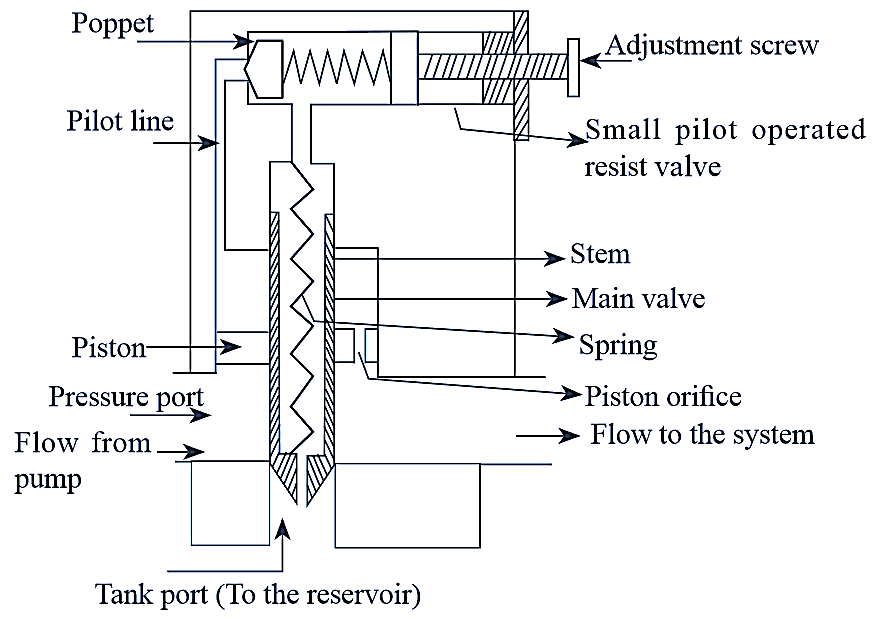Compound pressure relief valve also performs the same function as the simple pressure relief valve but it is pilot operated and is used to accommodate the high pressure and high flow capacities.

Figure 1: Compound Pressure Relief Valve.
Construction of Compound Pressure Relief Valve
The compound pressure relief valve consists of a small pilot operated relief valve with poppet arrangement and a main relief valve (Figure 1). It also consists of two ports, of which is one is pressure port, and the other is tank port. Pressure and tank ports are connected to the pressure line from the pump and the tank respectively.
In pilot relief valve, poppet is held in its seat by the spring action and an adjustment screw is provided to set the spring force at a value equal to desired operating pressure. The main relief valve consists of a piston with stem and piston has a drilled orifice. Both top and bottom surface areas of piston, on which the pressure acts is equal, hence it is in balanced condition by hydraulic forces in its closed position. To ensure that piston is closed properly, it is provided with light bias spring.
Working of Compound Pressure Relief Valve
The pressurized liquid flows to system when the system pressure is less than the preset spring force. When pressure in the system raises above set pressure, the pilot poppet moves away from its seat. As the pilot relief valve is opened, a small amount of flow go through the pilot line to the piston stem and back to the reservoir. A pressure difference across the piston occurs because of restricted flow at piston orifice. As a result, piston and stem move upwards from their seats and thereby, opening the tank port. Thus, the flow from the pump goes directly into the tank until the pressure of the system gets reduced to design pressure.